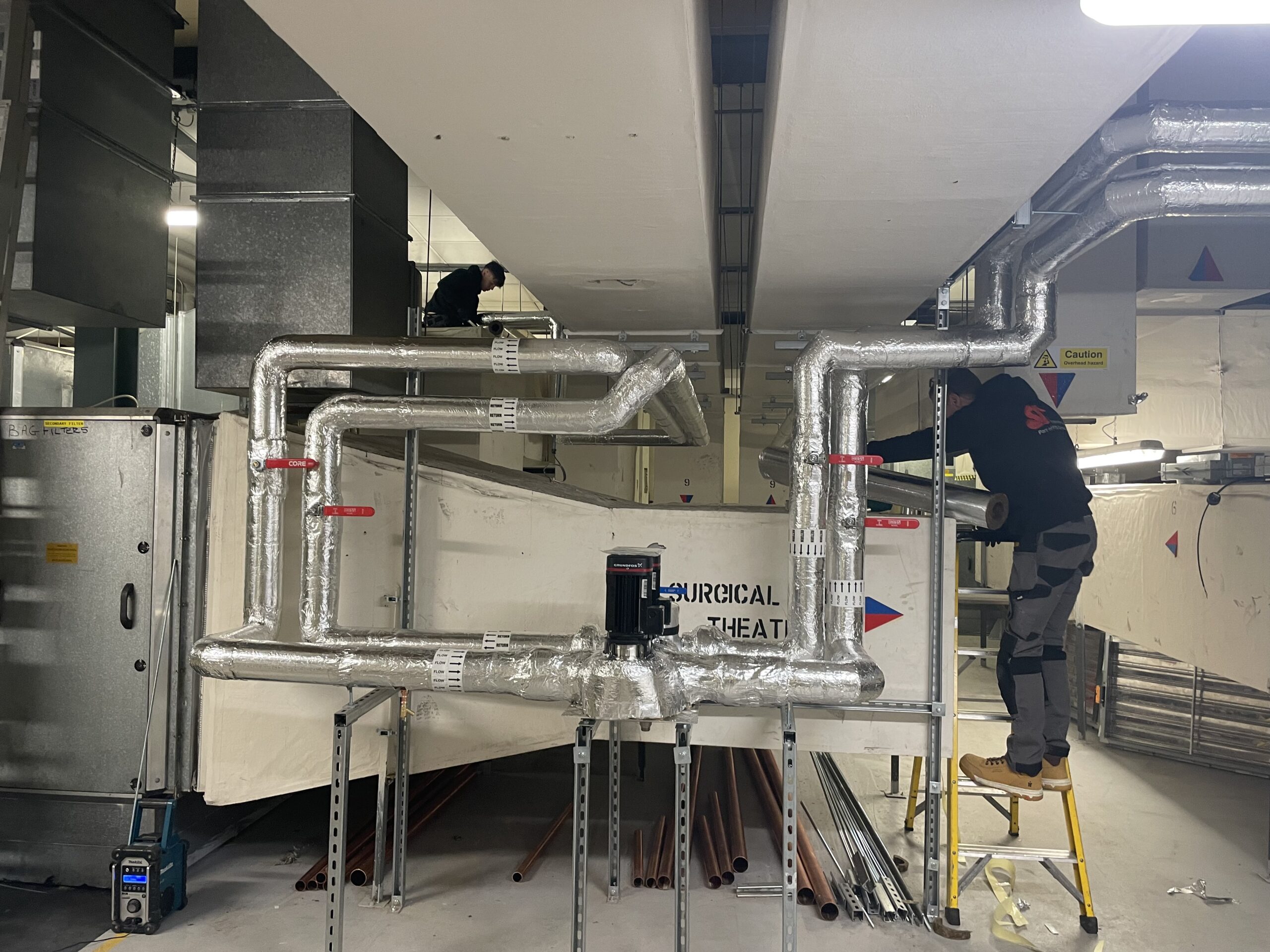A Successful Case Study - Improving Cooling Efficiency in Maternity Unit

Improving Cooling Efficiency in Maternity Unit – A Successful Case Study
Introduction: In collaboration with a NHS Trust, our team at SR Industrial undertook a comprehensive project to enhance the cooling capabilities of the Maternity Unit. This case study highlights the work we carried out and the positive outcomes achieved through our expertise and innovative solutions.
Objective: The primary objective of the project was to address the extreme temperatures experienced in the maternity unit during the summer of 2022. Our goal was to determine the feasibility of incorporating chilled water cooling coils into the existing air handling plants and propose cost-effective solutions to improve cooling efficiency.
Challenges:
- Extreme Temperatures: The maternity unit faced significant temperature fluctuations, with external ambient conditions ranging from 28°-38°C locally. This posed a challenge in maintaining a comfortable environment for patients and staff.
- Outdated Cooling System: The existing cooling system relied on air cooled chillers and lacked the capacity to provide cooling to all air handling plants in the unit. Upgrading the system without disrupting operations was a critical challenge.
Approach:
- Feasibility Study: We conducted a thorough feasibility study to assess the existing central chilled water system and air handling plants. This involved understanding the system’s capacity, identifying potential areas for improvement, and evaluating budget costs for proposed solutions.
- Innovative Cooling Solutions: Instead of adding remote cooling coils, we proposed adapting the central air handling plants to incorporate central chilled water cooling provision. This approach maximized the existing infrastructure and minimized additional costs.
- Energy Efficiency Measures: In addition to improving cooling efficiency, we recommended replacing the outdated Centrifugal fans with more energy-efficient EC plug fans. This not only reduced energy consumption but also provided the possibility of incorporating fan failure standby.
Results:
- Enhanced Cooling Capacity: By adapting the central air handling plants, we successfully expanded the provision of cooling to all main air handling plants in the maternity unit. This ensured a comfortable environment for patients and staff, even during extreme temperatures.
- Cost-Effective Solutions: Our proposed solutions, including unit-by-unit conversion and incorporating necessary chilled water plant adaptations, proved to be cost-effective alternatives. This allowed for future expansion and flexibility in incorporating cooling facilities as needed.
- Energy Savings: The replacement of outdated Centrifugal fans with energy-efficient EC plug fans resulted in significant energy savings. This not only reduced operational costs but also improved the overall sustainability of the facility.
Conclusion: Through our expertise and innovative solutions, we successfully improved the cooling efficiency in the Maternity Unit. Our work involved adapting the existing infrastructure, incorporating cost-effective solutions, and enhancing energy efficiency. The project’s outcomes not only addressed the extreme temperatures experienced but also provided a comfortable and sustainable environment for patients and staff.
Click Here to check out the HVAC services we offer


